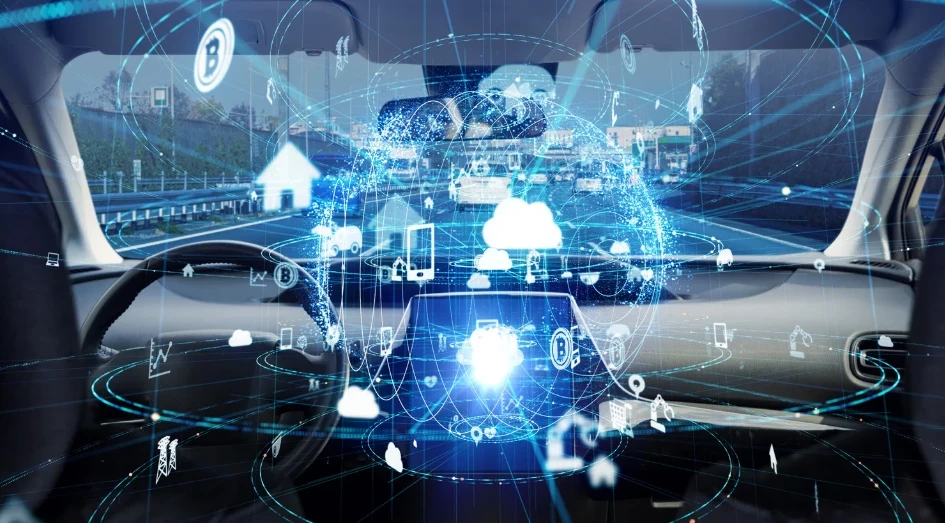Cars Getting a Better Sense of their Drivers
Add bookmarkAutonomous driving has become the hottest topic in the automotive industry, and the buzz continues to grow. We’ll have plenty more on that particular subject in Auto Tech Update over the coming months, but for now we’re going to concentrate on some of the 'interim' technology in development today.
As we move ever closer to driverless vehicles, the technology being introduced along each step of the way is just as fascinating as the overall concept itself. Recent advances in driver-sensing systems are going beyond basic drowsiness detection and becoming much more accurate in detecting the state of the driver. Currently these systems will be used to monitor the condition of the driver as part of an assisted driving system and in the interests of safety, but in the future they could also be integral to semi-autonomous vehicles.
Intelligent cars will soon be able to assess the condition and behaviour of the driver and react accordingly, alerting the driver to a situation and altering vehicle controls as necessary. This is another step towards relinquishing control of our cars, and allowing them to make decisions for us.
Driver drowsiness detection
Basic drowsiness detection systems have been used by several manufacturers over the last few years in an attempt to prevent drivers falling asleep on long, monotonous journeys. These systems tend to analyse steering-angle data to assess the driver’s steering behaviour and identify phases during which there is no steering for a brief period, followed by an abrupt correction. This data is evaluated along with a number of other parameters to determine signs of a fatigued driver, at which point an alarm system can be triggered.
Driver detection is starting to get a little more sophisticated, and the new technologies being developed are becoming much more interactive.
Volvo
Always at the forefront of safety technology, Volvo has developed a sensor, placed in the dashboard, which can monitor detail such as which direction the driver is looking, how open their eyes are, as well as their head position and angle. Currently installed in test vehicles and under research, the sensor will communicate with other vehicle safety systems to ensure the car stays in lane and keeps its distance from traffic in front if the driver is not paying attention.
Small LED’s installed in the dashboard illuminate the driver with infrared light (which is outside of the wavelengths the human eye can see), and this light is then monitored by the sensor.
Beyond safety systems, this technology could also be turned to a number of other functions such as lighting and seating. The interior and exterior lighting for example, could follow the direction in which the driver is looking, or the seating angle could be adjusted to suit the person sitting in the driver’s seat. The system could identify the driver by the sensor measuring between different points on the face to recognise the person and adjust the seats accordingly. This may un-nerve some drivers, but Volvo were quick to point out that system does not save any pictures and nor does it have a driver surveillance function.
Continental
Continental has recently developed a similar system which they have linked to an LED light strip which surrounds the entire vehicle interior, and uses situation-dependent light signals to guide the driver’s line of vision towards any impeding danger.
An infrared interior camera is situated in the steering column which monitors the driver’s face for eye and head movements. The vehicle electronics are able to detect whether the driver is tired or if their attention is not on the road. The LED lighting strip is used to steer the driver’s attention back to the road if a dangerous situation develops. The strip can produce a trail of light, a flashing wall of light, and various other signals, which are picked up in the driver’s peripheral vision instinctively focussing their attention in the desired direction.
The LED’s are also linked to other driver assistance systems and can act upon data received from other sensors, directing the driver’s attention to a potential situation picked up by one of the other vehicle safety systems. This is another interesting concept due to make the breakthrough into production, and another which gives the car that little bit more control.
Driver emotion sensing
Going one step further are researchers from the Ecole Polytechnique Fêdêrale de Lausanne (EPFL) who, in collaboration with PSA Peugeot Citroen, are actively studying how to identify a drivers emotion using embedded cameras that film their face.
The technology now exists which enables us to read facial expressions and identify which of the seven universal emotions a person is feeling: fear, anger, joy, sadness, disgust, surprise or suspicion. The technology has been used in video game development and marketing previously, but this project has brought it into the car.
The researchers adapted a facial detection device for use in a car, using an infrared camera placed behind the steering wheel. The aim was to get the device to recognise irritation on the face of the driver so the project focused on two expressions, anger and disgust (whose manifestations are similar to those of anger). The system ‘learned’ to recognise these emotions and proved to accurately detect anger on the face of the driver in the majority of cases.
Other areas of research being undertaken by EPFL include a fatigue detector that measures the percentage of eyelid closure, the detection of other state’s on the driver’s face such as distraction, and lip reading for use in vocal recognition.
Autonomous vehicles
These technologies are leading the way towards autonomous driving, and the car’s ability to recognise the condition of the driver will be critical for semi-autonomous vehicles. It is essential that there is a smooth transition as control is passed from the driver to the car and back to the driver again as necessary. The system will be able to confirm that the driver is awake and attentive before transferring control of the vehicle back for manual driving. And who knows, for the avoidance of road rage, perhaps the car won’t allow the driver to take control if they are displaying any sign of anger or irritation!
Sources
https://www.media.volvocars.com/global/en-gb/media/pressreleases/140898/volvo-cars-conducts-research-into-driver-sensors-in-order-to-create-cars-that-get-to-know-their-driv
http://www.continental-corporation.com/www/pressportal_com_en/themes/press_releases/3_automotive_group/interior/press_releases/pr_2014_01_15_anwc_holistic_hmi_en.html
http://files.messe.de/007-14/media/downloads/presse/pressemitteilungen-press-preview/continental-setzt-auf-leds-als-copilot-2.pdf
http://actu.epfl.ch/news/emotion-detectors-could-make-driving-safer/
































